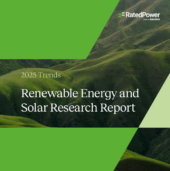While most emerging and developing economies face structural barriers to attracting new clean energy manufacturing jobs, India and Southeast Asia have fared relatively well on this front, according to a latest report by the International Energy Agency (IEA). Clean energy manufacturing jobs in this region represent nearly 15% of the global total. Several other countries, such as Vietnam, Morocco, and Malaysia, have also built sizable automotive and appliance manufacturing bases. These factories are reportedly well-positioned to pivot to clean technologies, such as EVs and heat pumps, as global demand continues to grow.
IEA report identified India as one of the fastest-growing major economies, with rising employment across several sectors, including the energy industry. Globally, the total energy employment reached over 8.5 million in 2023, around 1.5% of the country’s workforce, up by 3% year-on-year over the last five years. It identified the recent growth to be driven by a rapid increase in energy investment, which grew by 6% in 2023 to meet India’s growing energy demand.
According to the IEA report, clean energy investment saw the largest increase, rising 35% from the 2016-2021 average. At the same time, rising demand for fuel and electricity drove higher spending on conventional energy sources. The fossil fuel supply investment is also up by 6% year-on-year in 2023. The report compared and found that while clean energy sector employment rose by 5% in the same year, fossil fuel jobs grew by 2%. Globally, over 3 million workers were employed in fuel supply in 2023, with coal supply employing 1.6 million workers as the second-largest contributor to overall energy employment. According to recent findings, over half of these jobs were in the mining sector. The oil and gas sector employed over 800,000 workers, with about 60% in midstream and refining activities. Nearly 700,000 workers were engaged in low-emissions fuels, led by bioenergy, which includes the emerging bioethanol industry (now the third-largest globally) as well as the substantial, often informal, sector providing wood, woodchips, and charcoal to rural households.

Clean Energy Jobs
The power sector employed 3 million workers, with jobs split roughly evenly between electricity generation and grids. The recent findings indicated that the workforce involved in developing and operating power generation grew the fastest in recent years, increasing by more than 20% since 2019, alongside an 18% rise in India’s power generation capacity over that period.
The research indicated an increase in Solar PV and hydropower which accounted for the largest share of this increase, together adding over 250,000 jobs since 2019. Jobs related to developing and installing new power generation projects also reportedly grew, these jobs are more labor-intensive than the traditional operations and maintenance of existing capacity, representing 60% of the labor force, up from 56% in 2019. Whereas, in the grids segment jobs totaled to 1.6 million workers in 2023, grew by 6% from 2019 to 2023 due to rising electricity demand and transmission expansion to connect new renewable energy projects.













